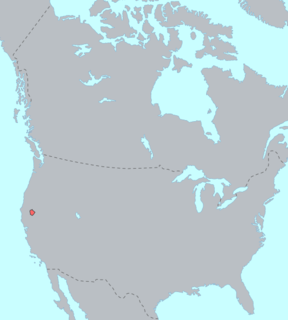In linguistics, an affix is a morpheme that is attached to a word stem to form a new word or word form. Affixes may be derivational, like English -ness and pre-, or inflectional, like English plural -s and past tense -ed. They are bound morphemes by definition; prefixes and suffixes may be separable affixes. Affixation is the linguistic process that speakers use to form different words by adding morphemes at the beginning (prefixation), the middle (infixation) or the end (suffixation) of words.
In morphology and syntax, a clitic is a morpheme that has syntactic characteristics of a word, but depends phonologically on another word or phrase. In this sense, it is syntactically independent but phonologically dependent—always attached to a host. A clitic is pronounced like an affix, but plays a syntactic role at the phrase level. In other words, clitics have the form of affixes, but the distribution of function words. For example, the contracted forms of the auxiliary verbs in I'm and we've are clitics.
A lexicon, word-hoard, wordbook, or word-stock is the vocabulary of a person, language, or branch of knowledge. In linguistics, a lexicon is a language's inventory of lexemes. The word "lexicon" derives from the Greek λεξικόν (lexicon), neuter of λεξικός (lexikos) meaning "of or for words."
A lexeme is a unit of lexical meaning that underlies a set of words that are related through inflection. It is a basic abstract unit of meaning, a unit of morphological analysis in linguistics that roughly corresponds to a set of forms taken by a single root word. For example, in English, run, runs, ran and running are forms of the same lexeme, which can be represented as RUN.

A morpheme is the smallest meaningful unit in a language. A morpheme is not identical to a word. The main difference between them is that a morpheme sometimes does not stand alone, but a word, by definition, always stands alone. The linguistics field of study dedicated to morphemes is called morphology. When a morpheme stands by itself, it is considered as a root because it has a meaning of its own. When it depends on another morpheme to express an idea, it is an affix because it has a grammatical function. Every word comprises one or more morphemes.
In linguistics, morphology is the study of words, how they are formed, and their relationship to other words in the same language. It analyzes the structure of words and parts of words, such as stems, root words, prefixes, and suffixes. Morphology also looks at parts of speech, intonation and stress, and the ways context can change a word's pronunciation and meaning. Morphology differs from morphological typology, which is the classification of languages based on their use of words, and lexicology, which is the study of words and how they make up a language's vocabulary.
In computer science, lexical analysis, lexing or tokenization is the process of converting a sequence of characters into a sequence of tokens. A program that performs lexical analysis may be termed a lexer, tokenizer, or scanner, though scanner is also a term for the first stage of a lexer. A lexer is generally combined with a parser, which together analyze the syntax of programming languages, web pages, and so forth.
A synthetic language uses inflection or agglutination to express syntactic relationships within a sentence. Inflection is the addition of morphemes to a root word that assigns grammatical property to that word, while agglutination is the combination of two or more morphemes into one word. The information added by morphemes can include indications of a word's grammatical category, such as whether a word is the subject or object in the sentence. Morphology can be either relational or derivational.
Morphological typology is a way of classifying the languages of the world that groups languages according to their common morphological structures. The field organizes languages on the basis of how those languages form words by combining morphemes. Analytic languages contain very little inflection, instead relying on features like word order and auxiliary words to convey meaning. Synthetic languages, ones that are not analytic, are divided into two categories: agglutinative and fusional languages. Agglutinative languages rely primarily on discrete particles for inflection, while fusional languages "fuse" inflectional categories together, often allowing one word ending to contain several categories, such that the original root can be difficult to extract. A further subcategory of agglutinative languages are polysynthetic languages, which take agglutination to a higher level by constructing entire sentences, including nouns, as one word.
In linguistics, a marker is a free or bound morpheme that indicates the grammatical function of the marked word, phrase, or sentence. Most characteristically, markers occur as clitics or inflectional affixes. In analytic languages and agglutinative languages, markers are generally easily distinguished. In fusional languages and polysynthetic languages, this is often not the case. For example, in Latin, a highly fusional language, the word amo is marked by suffix -o for indicative mood, active voice, first person, singular, present tense. Analytic languages tend to have a relatively limited number of markers.
A grammatical category or grammatical feature is a property of items within the grammar of a language. Within each category there are two or more possible values, which are normally mutually exclusive. Frequently encountered grammatical categories include:
In historical linguistics and language change, grammaticalization is a process of language change by which words representing objects and actions become grammatical markers. Thus it creates new function words by a process other than deriving them from existing bound, inflectional constructions, instead deriving them from content words. For example, the Old English verb willan 'to want', 'to wish' has become the Modern English auxiliary verb will, which expresses intention or simply futurity. Some concepts are often grammaticalized, while others, such as evidentiality, are not so much.

The Yana language was formerly spoken by the Yana people, who lived in north-central California between the Feather and Pit rivers in what is now the Shasta and Tehama counties. The last speaker of the southernmost dialect, which is called Yahi, was Ishi, who died in 1916. When the last fluent speaker of other dialects died is not recorded. Yana is fairly well documented, mostly by Edward Sapir.
Lexicalization is the process of adding words, set phrases, or word patterns to a language – that is, of adding items to a language's lexicon.
Nanosyntax is an approach to syntax where the terminal nodes of syntactic parse trees may be reduced to units smaller than a morpheme. Each unit may stand as an irreducible element and not be required to form a further "subtree." Due to its reduction to the smallest terminal possible, the terminals are smaller than morphemes. Therefore, morphemes and words cannot be itemised as a single terminal, and instead are composed by several terminals. As a result, Nanosyntax can serve as a solution to phenomena that are inadequately explained by other theories of syntax.
Odia morphology is the identification, analysis and description of the structure of morphemes and other units of meaning in the Odia language. Morphemes are the smallest units of the Odia language that carry and convey a unique meaning and is grammatically appropriate. A morpheme in Odia is the most minuscule meaningful constituent which combines and synthesizes the phonemes into a meaningful expression through its (morpheme's) form & structure. Thus, in essence, the morpheme is a structural combination of phonemes in Odia. In other words, in the Odia language, the morpheme is a combination of sounds that possess and convey a meaning. A morpheme is not necessarily a meaningful word in Odia. In Odia, every morpheme is either a base or an affix.
An agglutinative language is a type of synthetic language with morphology that primarily uses agglutination. Words may contain different morphemes to determine their meanings, but all of these morphemes remain, in every aspect, unchanged after their unions. This results in generally more easily deducible word meanings if compared to fusional languages, which allow modifications in either or both the phonetics or spelling of one or more morphemes within a word. This usually results in a shortening of the word, or it provides easier pronunciation.
In linguistic typology, polysynthetic languages are highly synthetic languages, i.e. languages in which words are composed of many morphemes. They are very highly inflected languages. Polysynthetic languages typically have long "sentence-words" such as the Yupik word tuntussuqatarniksaitengqiggtuq which means "He had not yet said again that he was going to hunt reindeer." The word consists of the morphemes tuntu-ssur-qatar-ni-ksaite-ngqiggte-uq with the meanings, reindeer-hunt-future-say-negation-again-third person-singular-indicative; and except for the morpheme tuntu "reindeer", none of the other morphemes can appear in isolation.
A grammeme in linguistics is a unit of grammar, just as a lexeme is a lexical unit and a morpheme is a morphological unit.
Laurel J. Brinton is an American-born Canadian linguist.

